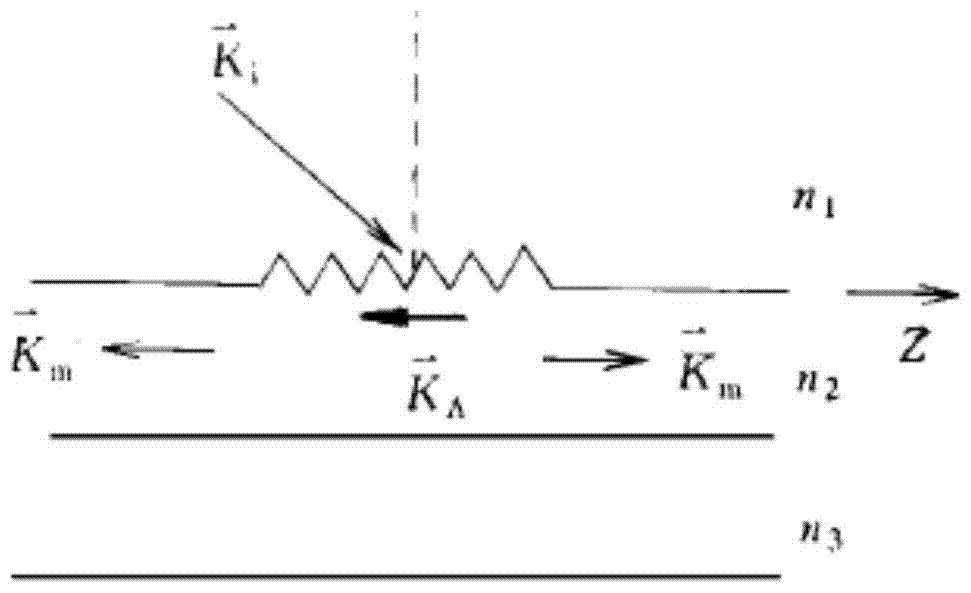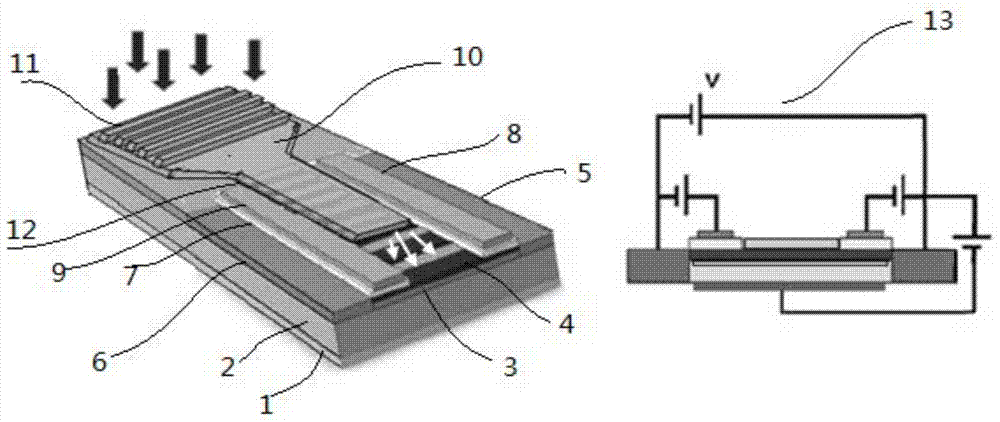Graphene nanoribbon array terahertz sensor based on optical waveguide
A graphene nanoribbon and optical waveguide technology, applied in the field of terahertz sensors, can solve the problems of small effective photosensitive surface and low signal light energy utilization rate, achieve high carrier mobility, improve light energy utilization rate, and light The effect of high availability
- Summary
- Abstract
- Description
- Claims
- Application Information
AI Technical Summary
Problems solved by technology
Method used
Image
Examples
Embodiment Construction
[0023] Below in conjunction with accompanying drawing and embodiment the present invention will be further described:
[0024] figure 1 Schematic diagram for single-layer graphene nanostructure and tuned bandgap. The biggest problem in the application of graphene materials as semiconductor optoelectronic materials is the zero energy gap characteristic of graphene, so the regulation of graphene energy gap has become the primary problem in the application of graphene optoelectronic devices. Lateral confinement, vertical electromagnetic field, molecular doping, strain and other methods have been applied to the regulation of graphene energy gap. Among them, the method of using graphene nanoribbons to generate an energy gap has become the best means to regulate the energy gap of graphene because it has little effect on the properties of graphene materials. figure 1 The left and right sides show the graphene nanoribbon structure and energy gap correspondence of different widths wi...
PUM
 Login to View More
Login to View More Abstract
Description
Claims
Application Information
 Login to View More
Login to View More - R&D
- Intellectual Property
- Life Sciences
- Materials
- Tech Scout
- Unparalleled Data Quality
- Higher Quality Content
- 60% Fewer Hallucinations
Browse by: Latest US Patents, China's latest patents, Technical Efficacy Thesaurus, Application Domain, Technology Topic, Popular Technical Reports.
© 2025 PatSnap. All rights reserved.Legal|Privacy policy|Modern Slavery Act Transparency Statement|Sitemap|About US| Contact US: help@patsnap.com



